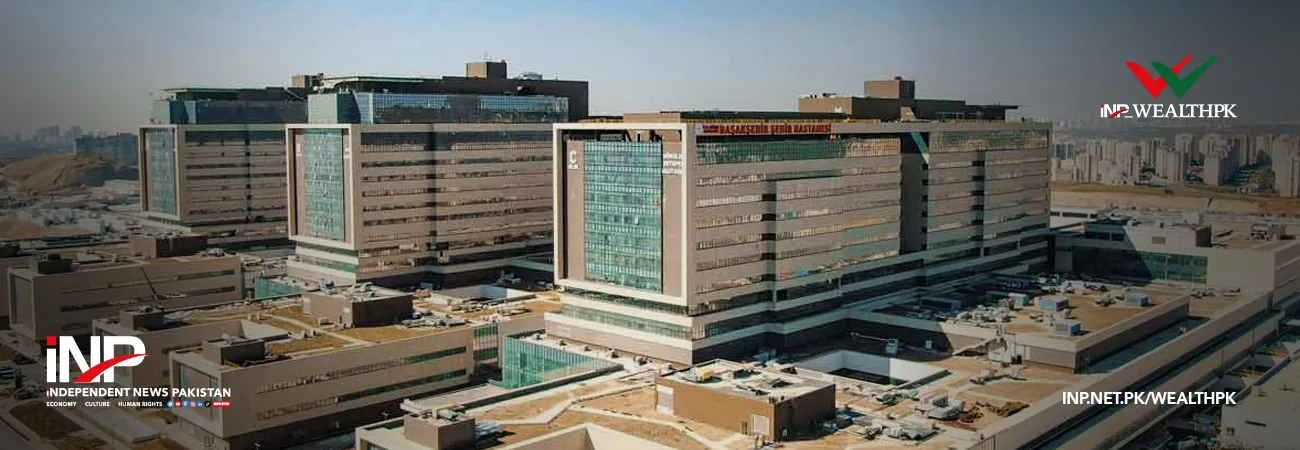INP-WealthPk
By Muskan Naveed
ISLAMABAD, Feb. 21 (INP-WealthPK): Pakistan was tipped to become an Asian Tiger; however, the country has been suffering from short periods of booms and busts. The cyclical growth of Pakistan has proved to be a major hurdle in the long-term aim of becoming a middle-income country.
According to research by the World Bank, the composition of growth in Pakistan has been regarded as the root cause of the cyclical growth pattern. The aggregate demand or the gross domestic product (GDP) comprises four components:
Aggregate demand = consumption + investment + government spending + net export.
An increase in any of the above listed components would cause economic growth in a country. However, a balance must be maintained and high emphasis is also placed upon the component of investment as it leads to capacity building.
Investment in Pakistan
In the case of Pakistan, consumption contributes 91.3% to the GDP of the country while investment’s contribution stands only at 15.2% and net exports are responsible for a negative growth of 8.3%, according to Economic Survey of Pakistan, 2020-21.
 Pakistan’s investment to GDP share has been experiencing a steady decline since 2009. Currently, it is near 15% while the figure for nearly half of South Asia lies at 30%. Private investment has experienced a decline of 1.29% in 2020, while public investment has surged upwards by 49.9%. If the composition continues in this way, economic growth in Pakistan can be further hampered. Therefore, an increasing emphasis needs to be paid on boosting private investment through the multitude of opportunities available in the country.
Pakistan’s investment to GDP share has been experiencing a steady decline since 2009. Currently, it is near 15% while the figure for nearly half of South Asia lies at 30%. Private investment has experienced a decline of 1.29% in 2020, while public investment has surged upwards by 49.9%. If the composition continues in this way, economic growth in Pakistan can be further hampered. Therefore, an increasing emphasis needs to be paid on boosting private investment through the multitude of opportunities available in the country.


Public investment vs private investment
The channels through which the government spends money can vary – for example, social security nets, infrastructure, among others. Moreover, a point of contention related to public investment is its sourcing. If the government is financing its spending through debt, then the cost of debt servicing and debt repayment may have disproportionally adverse effects compared with the benefits brought about by the public investment. Research has also proven that public investment largely has a crowding out effect on private investment – which means, government spending can replace private investment without being a perfect substitute for private investment. But it is also important to not discount on public investment as it is crucial especially for developing countries that lack key infrastructural developments. If we study public and private investment over the last couple of decades, an approximate inverse relationship can be found between public and private investment. Hence, the government needs to slowly phase out its high spending, while investing in sources that will crowd in private investment.
Opportunities
According to a report by IFC, the small and medium enterprises (SME) sector of Pakistan has been regarded by some reports to account for nearly 90% of all businesses in the country and around 90% of the non-agricultural labor force. The SMEs contribute to around 30% to the GDP of the country. However, the sector receives financing disproportionate to its size and scale – accounting for only 7% of the credit extended by the banking sector. Furthermore, the IFC regards Pakistan to have high GDP multipliers across most sectors when compared with similar countries in the region. This shows that investment in the country has a high impact on growth and employment.
Pakistan also has a huge population dividend with some of the greatest demographic opportunities available as youth accounts for more than 60% of the population. As the young population combine with a growing and promising SME sector, opportunities for investment guaranteeing high returns are ample.
The government has also been trying to create a conducive environment for long-term financing of SMEs. The central bank has launched the first instant payment system, Raast. The initiative as a digital micropayment gateway is geared towards settling small-value retail payments. Moreover, there is also an increasing focus on entrepreneurship and innovation with a growing number of startups.
Some of the other ways through which the government can boost private investment is deregulation, privatization, as well as public-private partnerships. Pakistan is also the world’s seventh most protected country in the Overall Trade Restrictiveness Index. The simplification of the complex tariff structure can unleash many opportunities.
If we study public and private investment over the last couple of decades, an approximate inverse relationship can be found between public and private investment. Hence, the government needs to slowly phase out its high spending, while investing in sources that will crowd in private investment.
Opportunities
According to a report by IFC, the small and medium enterprises (SME) sector of Pakistan has been regarded by some reports to account for nearly 90% of all businesses in the country and around 90% of the non-agricultural labor force. The SMEs contribute to around 30% to the GDP of the country. However, the sector receives financing disproportionate to its size and scale – accounting for only 7% of the credit extended by the banking sector. Furthermore, the IFC regards Pakistan to have high GDP multipliers across most sectors when compared with similar countries in the region. This shows that investment in the country has a high impact on growth and employment.
Pakistan also has a huge population dividend with some of the greatest demographic opportunities available as youth accounts for more than 60% of the population. As the young population combine with a growing and promising SME sector, opportunities for investment guaranteeing high returns are ample.
The government has also been trying to create a conducive environment for long-term financing of SMEs. The central bank has launched the first instant payment system, Raast. The initiative as a digital micropayment gateway is geared towards settling small-value retail payments. Moreover, there is also an increasing focus on entrepreneurship and innovation with a growing number of startups.
Some of the other ways through which the government can boost private investment is deregulation, privatization, as well as public-private partnerships. Pakistan is also the world’s seventh most protected country in the Overall Trade Restrictiveness Index. The simplification of the complex tariff structure can unleash many opportunities.













